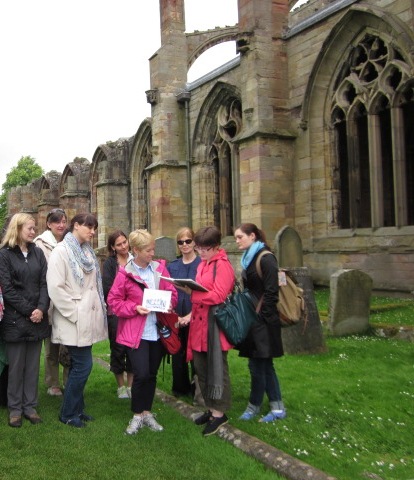The Smithsonian-George Mason University History of Decorative Arts Program

The Smithsonian is not a degree granting institution, but did you know that there are students studying at the Smithsonian, right on the National Mall?
Through a partnership with George Mason University and The Smithsonian Associates, and a program of rigorous academic and professional connoisseurship training offered by an expert faculty, the Smithsonian-Mason MA in the History of Decorative Arts Program stands at the forefront of preparing decorative arts professionals. The unique feature of the MA program is object-based instruction built around behind-the-scenes access. Privileged entrée for students is accomplished through dozens of networks of regional, national and international collections representing millions of objects. Students are educated in the history of decorative arts, Renaissance to contemporary, European and American, complemented with consideration of the arts of Asia and Africa. In addition to theoretical and contextual studies, connoisseurship skills are built through object-based courses in furniture, glass, ceramics, metalwork, craft, costume, and textiles.
Internships are a structured part of the course of study. The expert and engaged faculty and wider sphere of decorative arts professional network all contribute to students finding their scholarly voice and pursuing individual academic interests. This is further supported by the structure of the curriculum. One-half of a student’s courses are electives and the curriculum allows for general training as well as areas of deep specialization.
Both program interns and graduates are in high demand for positions at museums, historic organizations, and commercial art businesses throughout the country and around the world. Students have access to an extensive successful and supportive alumni network.
Since its inception in 1996, the MA in the History of Decorative Arts program:
- Is producing highly trained and successful graduates.
- Students experience a program of demanding academic and professional connoisseurship training offered by an expert faculty.
- A very high percentage of the program’s 180+ graduates find employment in the field of decorative arts. Each year graduates join the ranks of distinguished scholars, museum professionals and commercial art market managers.
The Washington, DC program’s uniqueness is derived from its location in the heart of the nation’s capital, the Smithsonian Institution, and regional museums and research centers. Washington, DC, offers an unmatched concentration of scholarly and cultural opportunities where students gain insider access to great public and private collections. The nation’s capital is an extended field laboratory of both public and private treasures awaiting further exploration.
These resources give the M.A. in the History of Decorative Arts access to collections of objects and research institutions no other decorative arts program in the U.S. can match. The program has established close working relationships with relevant Smithsonian museum collections, the Federal Consortium of Collections (Departments of State, Treasury and White House), Library of Congress, the world’s largest library, and the National Gallery of Art.
The program also is networked with dozens of regional museum and historic house collections and research archives giving students and faculty the access to millions of artifacts and unparalleled quantities of primary source documentation on the visual arts.
Internships and Smithsonian M.A. Fellowship assignments offer complementary hands-on professional training.
History
- In 1995 Parsons School of Design approached Smithsonian senior management and proposed the expansion of its successful master’s degree program at the Cooper-Hewitt, National Design Museum.
- The Smithsonian Associates as the Institution’s center for life-long learning was the most appropriate Smithsonian partner for the Master’s Program in Washington, DC. The program was inaugurated in Washington, DC, in Fall 1996.
Faculty
- An outstanding faculty of leading decorative arts experts who also are practicing professionals teaches all courses in the program and includes scholars drawn from the Washington, DC, region supplemented with visiting guest faculty from across the U.S. and from Europe.
- The faculty is extremely loyal to the HDA program and cites students’ level of scholarship, effort and how engaged they are with their studies.
- Over seventy-five percent have earned doctorates.






